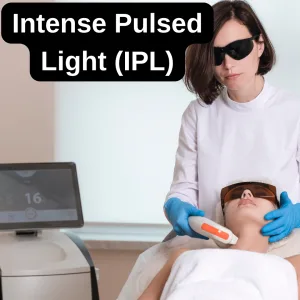Full body laser hair removal is a highly effective and long-lasting method that targets unwanted hair across the entire body. This treatment has gained immense popularity due to its precision, efficiency, and ability to provide smooth, hair-free skin with minimal maintenance. But what areas are covered in full body laser hair removal? Does it include private parts, buttocks, or eyebrows? In this comprehensive guide, we will explore everything you need to know about full body laser hair removal, including the body areas treated, session duration, preparation tips, and aftercare recommendations.
What Areas Does Full Body Laser Hair Removal Cover?
Full body laser hair removal typically covers all major areas where unwanted hair may grow, with the exception of sensitive areas around the eyes. Below is a list of body parts included in full body laser treatments:
The table below provides a comprehensive overview of the areas included and excluded in full body laser hair removal. Understanding which regions are treated and which are avoided ensures that clients can set realistic expectations before starting their sessions.
| Included Areas in Full Body Laser | Excluded Areas in Full Body Laser |
| Face and Neck (Forehead, upper lip, cheeks, jawline, chin, neck) | Eyes and Eyelids (Including eye sockets) |
| Arms and Underarms (Full arms, armpits) | Eyebrows and Surrounding Areas |
| Chest and Back (Chest, stomach, back) | Inner Nose and Ears |
| Legs (Thighs, knees, lower legs, feet) | Anus and Inside Buttocks |
| Bikini and Genital Area (Bikini line, Brazilian, perianal region) | Extremely Sensitive Skin Areas |
| Buttocks (Outer buttocks) | Areas with Open Wounds or Infections |
Note: Full body laser hair removal can be customized based on individual preferences, allowing clients to exclude specific areas if desired.
Here’s a detailed breakdown of each treatment area:
Face and Neck
Laser hair removal for the face and neck effectively removes unwanted hair from areas prone to fine and coarse hair growth. These areas include:
- Forehead: Removes stray hairs around the hairline for a cleaner look.
- Cheeks: Targets fine hair (peach fuzz) that may appear on the upper cheeks.
- Upper Lip: Removes unwanted hair above the lip, also known as the mustache area.
- Chin and Jawline: Targets coarse and thick hair that grows around the jawline and chin, often triggered by hormonal changes.
- Neck: Covers both the front and back of the neck, where coarse and fine hairs can be treated.
Arms and Underarms
The arms and underarms are popular treatment areas that respond well to laser hair removal. Treatments in these areas include:
- Full Arms: Removes hair from the shoulders to the wrists, including the upper and lower arms.
- Forearms: Focuses on the area from the elbow to the wrists, targeting thicker hair.
- Underarms: One of the most requested areas, eliminating hair from the armpits to prevent frequent shaving and irritation.
Chest and Back
Laser hair removal on the chest and back is ideal for individuals who experience thick or coarse hair in these regions. Treatment in this area includes:
- Chest: Covers the pectoral region, which is prone to thicker hair growth.
- Stomach: Treats the abdomen area, including the area around the belly button (often referred to as the ‘happy trail’).
- Full Back: Covers the entire back, including the upper, middle, and lower portions, often extending to the shoulders.
Legs and Feet
Full leg laser hair removal targets large areas of the body where hair growth tends to be more prominent. This includes:
- Thighs: Covers the upper portion of the legs from the hips to the knees.
- Knees and Lower Legs: Treats the lower legs from the knees to the ankles.
- Toes and Feet: Includes the tops of the feet and toes, where fine hair is often present.
Bikini and Genital Area
Laser hair removal in the bikini and genital region is a popular choice for those looking for a clean, smooth appearance. Treatment in this area includes:
- Bikini Line: Removes hair along the edges of the bikini area, preventing visible hair outside swimwear.
- Brazilian Area: Covers the entire pubic region, including the labia and perianal area, for complete hair removal.
- Perianal Region: Focuses on the area around the anus for a thorough and smooth finish.
Buttocks
Laser hair removal for the buttocks ensures a smooth and hair-free appearance. Treatment in this area includes:
- Full Buttocks: Removes hair from the butt cheeks, providing a clean and smooth look.
- Excludes Anus: Laser treatment avoids the delicate area around the anus due to its sensitivity.
Additional Areas: Hands and Feet
While often overlooked, the hands and feet can also be treated during full body laser hair removal. This includes:
- Fingers and Hands: Removes fine hair from the fingers and tops of the hands.
- Toes and Feet: Treats the tops of the feet and toes for a completely smooth appearance.
Does Full Body Laser Include Eyebrows?
No, eyebrows are not included in full body laser hair removal. Due to the sensitivity of the eye area and the potential risk of injury, lasers are not recommended for the eyebrows. For eyebrow maintenance, alternative methods such as threading or tweezing are safer options.
Since eyebrows are not included in full body laser treatments due to safety concerns, alternative methods such as waxing or threading are often preferred. However, if you’re curious about laser waxing and its effectiveness, we have a comprehensive guide.
Customizing Full Body Laser Hair Removal
Full body laser hair removal treatments can be tailored to meet individual preferences. Clients can choose to include or exclude specific areas based on their desired results. Many clinics offer package options where clients can personalize their treatment plan to focus on areas where they want permanent hair reduction while skipping regions they prefer not to treat.
By understanding the specific areas covered in a full body laser hair removal treatment, clients can set realistic expectations and ensure they receive comprehensive, customized care tailored to their individual needs.
How to Prepare for Laser Hair Removal
Proper preparation ensures that the laser targets the hair follicles effectively, minimizing side effects and maximizing results. Follow these essential steps before your session:
1. Shave the Treatment Area
Shave the treatment area 24 hours before your session. This ensures the laser focuses on the follicle beneath the skin rather than surface hair. Avoid waxing or plucking, as these methods remove the follicle and reduce laser effectiveness.
2. Avoid Sun Exposure
Avoid sun exposure and tanning beds for at least 4-6 weeks before treatment. Sunburned or tanned skin increases the risk of burns and hyperpigmentation.
3. Skip Harsh Skin Products
Discontinue the use of harsh skincare products, such as retinoids and exfoliants, at least 5-7 days before the session to prevent skin irritation.
4. Wear Loose Clothing
On the day of your treatment, wear loose and comfortable clothing to avoid friction on treated areas.
Can I Shave 3 Hours Before Laser Hair Removal?
No, shaving immediately before laser hair removal is not recommended. Shaving right before the session can cause irritation and increase skin sensitivity. Always shave 12-24 hours before your appointment to allow the skin to recover.
What to Wear to a Full Body Laser Appointment?
When going for your laser session:
- Wear loose-fitting clothes that do not rub against the treated skin.
- Avoid tight underwear or leggings that can cause friction.
- Opt for cotton fabrics that allow the skin to breathe.
Choosing the right outfit is essential for comfort and to avoid irritation post-treatment. For a comparison between waxing and epilation methods that may affect skin sensitivity, explore our guide on waxing vs. epilators.
Which Areas Are Not Suitable for Laser Hair Removal?
While full body laser hair removal effectively targets most areas with unwanted hair, certain regions should be avoided due to safety concerns or reduced effectiveness. Understanding which areas are not suitable for laser treatment helps ensure safe and successful results.
Areas Where Laser Hair Removal Should Be Avoided
- Mucous Membranes (Nose and Ears):
Inner nose and ear regions are highly sensitive and contain mucous membranes that can be damaged by laser energy. These areas should not be treated to prevent potential burns or infections. - Areas with Active Skin Conditions:
Skin affected by conditions such as eczema, psoriasis, or active acne should not be treated with laser hair removal. Laser exposure can exacerbate irritation and worsen skin conditions. - Moles and Birthmarks:
Moles and birthmarks contain high levels of pigment, making them highly sensitive to laser energy. Treating these areas can lead to pigmentation changes, blistering, or scarring.
Can Laser Hair Removal Be Performed on Tattoos?
No, laser hair removal should never be done over tattooed skin. Doing so can lead to burns, scarring, and pigment changes. If the treated area contains tattoos, the technician will leave a safety margin around them to avoid damage.
By identifying areas that are unsuitable for laser hair removal, clients can take the necessary precautions to ensure a safe and effective treatment experience.
Can I Do Full Body Laser Hair Removal in One Session?
Yes, full body laser hair removal can be completed in one session, but it’s important to understand the process and potential limitations. A single session typically lasts between 2 to 3 hours, depending on factors such as the treatment area size, hair density, and skin type. While it’s possible to treat all areas in one session, many professionals recommend splitting the treatment into multiple sessions to minimize discomfort, reduce the risk of skin irritation, and ensure optimal results.
Why Splitting Laser Sessions Can Be Beneficial
Although one session can target all desired areas, dividing the treatment into smaller sessions may provide several advantages:
- Reduced Skin Sensitivity: Treating the entire body at once can increase skin sensitivity. Breaking sessions into smaller parts allows the skin to recover, reducing the likelihood of redness, irritation, or swelling.
- Improved Treatment Precision: Multiple sessions allow the technician to focus more precisely on different areas, ensuring consistent energy distribution and better targeting of hair follicles.
- Less Discomfort: A full-body session can cause prolonged exposure to heat, which may be uncomfortable for sensitive skin. Dividing the procedure provides time for the skin to cool between sessions.
- Better Results for Dense Hair Areas: Areas with thicker or denser hair, such as the back or legs, may require extra attention. Dividing the treatment ensures these areas receive the focused energy they need for maximum effectiveness.
If you’re considering doing a full body laser treatment in one go, it’s important to understand the benefits and possible limitations. You can also read about how laser hair removal works to better understand the technology behind the procedure.
What Happens During a Laser Hair Removal Session?
Understanding the process of full body laser hair removal can help ease anxiety and set realistic expectations. Here’s a step-by-step breakdown of what to expect during your session:
1. Pre-Treatment Preparation
- Cleansing and Shaving: The treatment area is cleansed, and if necessary, the technician may shave any remaining surface hair to ensure the laser effectively targets the follicles.
- Application of Cooling Gel: A cooling gel or numbing cream is applied to the skin to minimize discomfort and protect the outer layers from excessive heat. This step is especially important for sensitive areas like the bikini line and underarms.
Before your laser session, understanding the complete process can help you feel more comfortable and prepared. If you’re wondering about the duration of a full body laser treatment, check out our detailed guide on how long full body laser hair removal takes.
2. Laser Application and Targeting
- Customized Laser Settings: The laser technician adjusts the device settings based on your skin type, hair color, and the treatment area. This customization ensures the laser delivers the right energy to target hair follicles without damaging the surrounding skin.
- Pulse Emission and Follicle Destruction: The laser emits pulses of concentrated light that penetrate the skin and target the melanin in the hair follicle. This light energy is converted into heat, which damages the follicle and prevents future hair growth.
3. Sensation and Comfort
- Mild Tingling Sensation: Most patients describe the sensation as similar to a rubber band snapping against the skin. While some discomfort may be experienced, cooling devices and numbing gels help alleviate any pain.
- Varying Sensitivity by Area: Sensitive areas like the bikini line and underarms may feel slightly more discomfort, while larger areas like the legs and back may be more tolerable.
4. Post-Treatment Cooling and Care
- Cooling Period: After the treatment, a cooling gel or ice pack may be applied to soothe the treated skin and reduce redness or swelling.
- Aftercare Instructions: Your technician will provide detailed aftercare guidelines, including avoiding sun exposure, using a gentle moisturizer, and refraining from harsh skin products for a few days.
Should You Opt for Full Body Laser in One Session or Multiple Sessions?
Choosing between a single full body session or multiple sessions depends on individual preferences, pain tolerance, and skin sensitivity. While a single session provides quicker overall results, dividing the treatment allows for greater comfort and more focused attention on sensitive or high-density areas. Consulting with a certified laser technician can help determine the most effective treatment plan based on your unique skin type and hair removal goals.
Potential Side Effects and How to Avoid Them
While laser hair removal is generally safe, minor side effects may occur.
| Side Effect | How to Avoid It |
| Redness and Swelling | Apply ice packs or aloe |
| Skin Sensitivity | Avoid sun exposure |
| Temporary Pigmentation | Use SPF consistently |
| Ingrown Hairs | Exfoliate gently |
Although side effects are minimal, it’s essential to be aware of possible reactions such as redness and sensitivity. For more information on managing potential side effects, explore our article on laser hair removal side effects.
For more expert insights and answers to common questions about laser hair removal, visit the American Academy of Dermatology’s Laser Hair Removal FAQs.
Does Full Body Laser Hair Removal Cause Skin Damage?
Full body laser hair removal is generally safe when performed by a certified professional, but some people worry about potential skin damage. While permanent skin damage is rare, mild and temporary side effects can occur.
Can Laser Hair Removal Damage the Skin Permanently?
Permanent skin damage is highly unlikely if the treatment is performed with the correct laser settings for your skin type. Modern laser technology targets hair follicles without affecting the surrounding skin, minimizing the risk of burns or scarring.
How to Minimize the Risk
To reduce the likelihood of skin damage:
- Avoid Sun Exposure: Stay out of the sun 4-6 weeks before and after treatment.
- Follow Aftercare Instructions: Use soothing creams like aloe vera and avoid harsh skincare products.
- Choose an Experienced Technician: Ensure your provider is certified and experienced with your skin type.
Safe When Performed Correctly
Full body laser hair removal is safe and effective when performed by a qualified professional. Understanding potential side effects and following proper aftercare ensures a smooth, damage-free experience.
Is Full Body Laser Hair Removal Safe During Pregnancy?
Many expectant mothers wonder whether full body laser hair removal is safe during pregnancy. Although laser hair removal is generally considered a safe and non-invasive procedure, there is limited research on its effects during pregnancy. For this reason, most medical professionals advise avoiding laser treatments during pregnancy to minimize potential risks.
Why Is Laser Hair Removal Avoided During Pregnancy?
During pregnancy, the body undergoes significant hormonal changes that can affect skin sensitivity, pigmentation, and hair growth patterns. These changes increase the likelihood of experiencing skin irritation, hyperpigmentation, or discomfort after laser treatment.
Potential Concerns for Pregnant Women
- Increased Skin Sensitivity: Hormonal changes may make the skin more sensitive during pregnancy, increasing the risk of irritation, redness, and discomfort.
- Hyperpigmentation Risk: Pregnant women are more prone to developing hyperpigmentation (dark spots), particularly in treated areas, due to increased melanin production.
- Lack of Safety Studies: There is a lack of comprehensive clinical studies examining the safety of laser hair removal during pregnancy. As a precaution, most healthcare providers recommend postponing treatments until after childbirth.
Is It Safe to Continue Sessions During Pregnancy?
If you’ve already started full body laser hair removal before becoming pregnant, it’s best to pause your sessions and consult with your healthcare provider. While there is no direct evidence indicating harm to the baby, most clinics and practitioners err on the side of caution and recommend waiting until after delivery to resume treatment.
When Can I Resume Laser Hair Removal After Pregnancy?
Most experts suggest waiting at least 6-8 weeks postpartum before resuming laser hair removal sessions. This waiting period allows your body to regulate hormone levels and for your skin to return to its normal state. If you are breastfeeding, it’s still advisable to consult with your doctor to ensure that continuing laser treatments is safe.
What Are the Best Alternatives to Full Body Laser Hair Removal?
Although full body laser hair removal is one of the most effective methods for long-term hair reduction, some individuals may prefer alternative methods depending on their skin sensitivity, budget, or personal preferences. Here’s a look at the most popular alternatives:
1. Waxing
Waxing is a popular hair removal method that removes hair from the root. It provides smoother skin for 3 to 6 weeks, but regular sessions are required to maintain results. While waxing can be done at home or in a salon, it may cause irritation for those with sensitive skin.
2. Sugaring
Sugaring is a natural alternative to waxing that uses a mixture of sugar, lemon, and water to remove hair. It is less painful and causes minimal irritation, making it a preferred option for individuals with sensitive skin.
3. Epilators
Epilators are electronic devices that remove hair by plucking it from the root. This method can be used at home and provides results lasting up to 4 weeks. However, some users may experience discomfort or ingrown hairs, especially on sensitive areas.
4. Hair Removal Creams (Depilatory Creams)
Hair removal creams dissolve hair at the surface level, offering a painless solution for hair removal. While they provide quick results, they are not as long-lasting as other methods and may cause skin irritation if left on for too long.
5. Shaving
Shaving is the most common and inexpensive method of hair removal. However, the results are temporary, with hair regrowth occurring within a few days. Shaving is ideal for individuals looking for a quick, pain-free option but may lead to ingrown hairs if not done properly.
Pros and Cons of Alternatives
Each alternative method comes with its advantages and disadvantages. For example, while waxing and sugaring provide longer-lasting results, they may be painful. On the other hand, shaving and hair removal creams are pain-free but require frequent maintenance.
Considering other hair removal methods? Explore the pros and cons of waxing vs epilators.
Conclusion: Is Full Body Laser Hair Removal Right for You?
Full body laser hair removal is a safe, effective, and long-lasting solution for achieving smooth, hair-free skin. Whether you are looking to remove hair from sensitive areas like the bikini line or larger areas like the legs and back, laser treatment can offer permanent results with minimal discomfort. Book a consultation with a certified laser professional today and begin your journey to flawless skin.

Certified Laser Hair Removal Specialist & Licensed Laser Practitioner
With 17+ years of hands-on experience in laser hair removal, She is a certified laser practitioner and master trainer with advanced credentials in diode laser systems and women’s skincare. She has led over 200,000 successful sessions, combining deep technical expertise with a strong academic foundation. Known for her professional integrity and results-driven approach, she ensures all guidance is scientifically grounded and client-focused.





